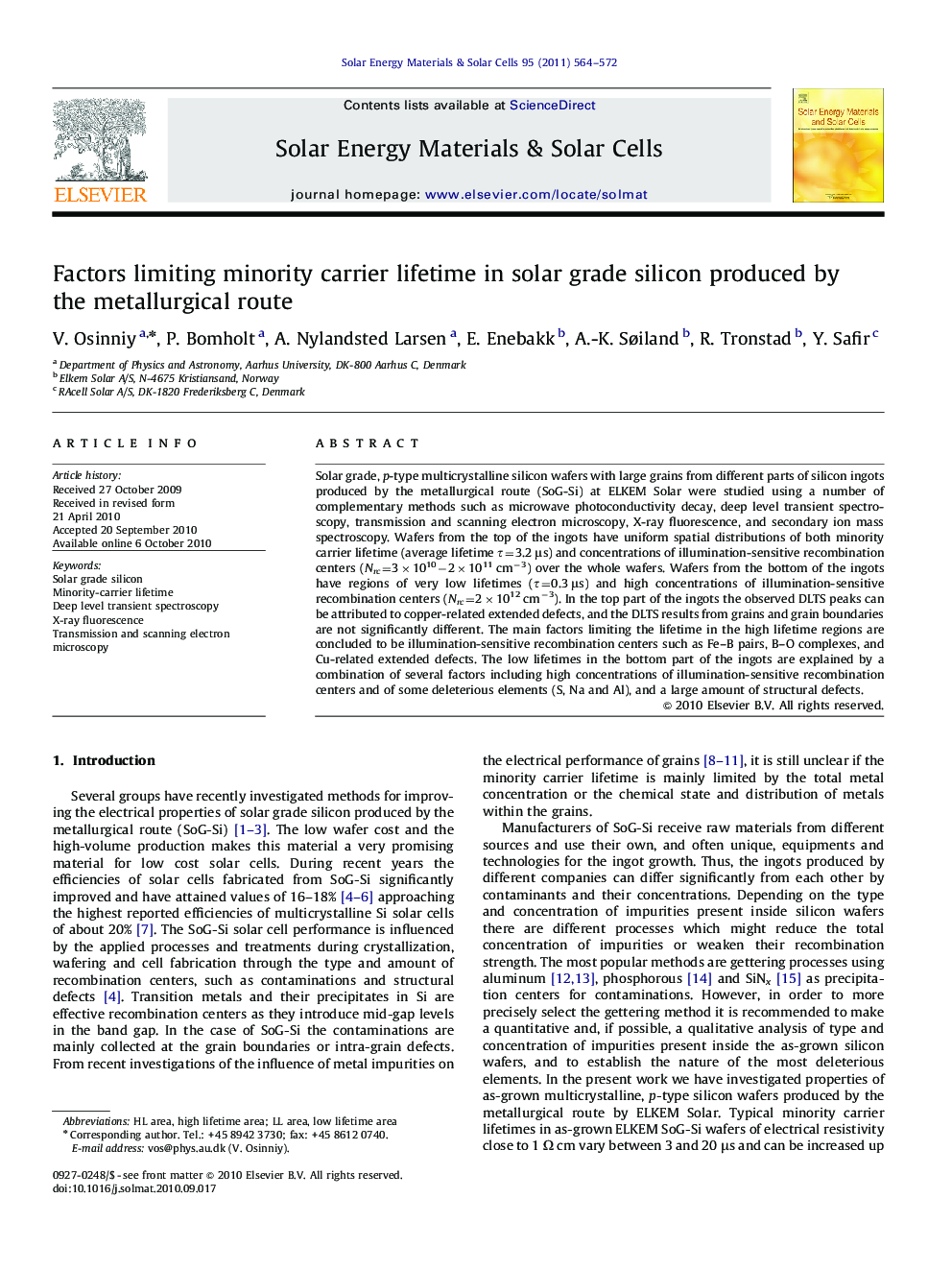| Article ID | Journal | Published Year | Pages | File Type |
|---|---|---|---|---|
| 79222 | Solar Energy Materials and Solar Cells | 2011 | 9 Pages |
Solar grade, p-type multicrystalline silicon wafers with large grains from different parts of silicon ingots produced by the metallurgical route (SoG-Si) at ELKEM Solar were studied using a number of complementary methods such as microwave photoconductivity decay, deep level transient spectroscopy, transmission and scanning electron microscopy, X-ray fluorescence, and secondary ion mass spectroscopy. Wafers from the top of the ingots have uniform spatial distributions of both minority carrier lifetime (average lifetime τ=3.2 μs) and concentrations of illumination-sensitive recombination centers (Nrc=3×1010−2×1011 cm−3) over the whole wafers. Wafers from the bottom of the ingots have regions of very low lifetimes (τ=0.3 μs) and high concentrations of illumination-sensitive recombination centers (Nrc=2×1012 cm−3). In the top part of the ingots the observed DLTS peaks can be attributed to copper-related extended defects, and the DLTS results from grains and grain boundaries are not significantly different. The main factors limiting the lifetime in the high lifetime regions are concluded to be illumination-sensitive recombination centers such as Fe–B pairs, B–O complexes, and Cu-related extended defects. The low lifetimes in the bottom part of the ingots are explained by a combination of several factors including high concentrations of illumination-sensitive recombination centers and of some deleterious elements (S, Na and Al), and a large amount of structural defects.
